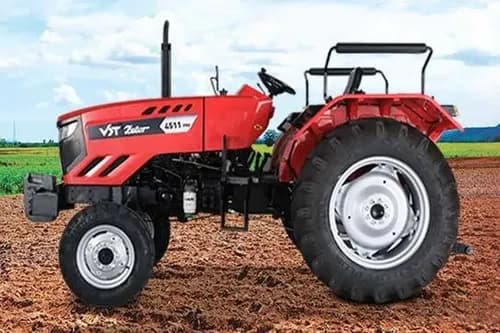Ad
Ad
Potato Farming in India: Role of Potatoes in Indian Agriculture
India is the world's second-largest producer of potatoes after China, with a production of more than 50 million tonnes. This article explores the key aspects of potato farming in India.

India stands as one of the leading potato producers in the world. This is the result of the substantial income potential that potato farming offers. In this article, we have provided comprehensive insight into potato farming, cultivation, harvesting, and step-by-step guidelines to ensure successful potato farming.
Potato, scientifically known as Solanum tuberosum, is one of the most widely consumed and versatile vegetables globally. In India, potato farming plays a crucial role in agriculture, contributing significantly to both the economy and the daily diet of millions. In India, Potato is known as the "King of Vegetables."
Originally, potato was not grown in India. It was introduced to India by Portuguese merchants in the early 17th century. Today, India is the world's second-largest producer of potatoes after China, with a production of more than 50 million tonnes. This article explores the key aspects of potato farming in India, from planting to harvesting.
Cultivation Practices
Climate and Soil Requirements:
- Potato farming in India is suitable for a wide range of climates, but it thrives best in cool temperatures. The ideal temperature range for potato cultivation is between 15°C to 20°C.
- Well-drained, loose, and loamy soil with a slightly acidic to neutral pH is preferred for optimal growth.
- A pH range of 5.2 to 6.4 is best for potato farming in India.
Types of Potatoes India cultivates various potato varieties, each adapted to different agro-climatic conditions. Popular varieties include Kufri Jyoti, Kufri Chandramukhi, Kufri Pukhraj, and Kufri Bahar. Farmers choose varieties based on factors such as climate, soil type, and market demand.
Also Read: Green Peas Farming: A Comprehensive Guide
Varieties of Potatoes Sown in India
Kufri Chandramukhi: Found in Bihar, Gujarat, Haryana, Punjab, Madhya Pradesh, Himachal Pradesh, Uttar Pradesh, Orissa, and West Bengal, this potato variety matures in 80-90 days. It has large, round, white tubers with slightly flattened eyes. The average yield is around 25 tonnes per acre, and it’s ideal for making instant flakes and chips.
Kufri Sindhuri: This variety is grown in states like Bihar, Gujarat, Maharashtra, Punjab, Uttar Pradesh, Karnataka, and Jammu Kashmir. It takes approximately 110-120 days to mature. Kufri Sindhuri can withstand temperature and water stress. With an average yield of 40 tonnes per acre, it is suitable for processing.
Kufri Badshah: Predominantly grown in Jammu Kashmir, Haryana, Punjab, Gujarat, Uttar Pradesh, and Madhya Pradesh, Kufri Badshah matures in 100-110 days. With an average yield of about 50 tonnes per hectare, it’s a great choice for cooking.
Kufri Jyoti: Kufri Jyoti is Grown in Bihar, Maharashtra, Gujarat, Haryana, Punjab, Uttar Pradesh, Karnataka, and West Bengal. Kufri Jyoti has small, swift eyes and white flesh. Its average yield is 20 tonnes per acre, and it serves well for processing purposes.
Kufri Lauvkar: Mainly cultivated in Maharashtra, Madhya Pradesh, and Karnataka, Kufri Lauvkar boasts large, round tubers with fleet eyes and white flesh. It thrives in warm climates and yields approximately 30 tonnes per hectare, making it suitable for making chips.
Kufri Bahar: Grown in Haryana, Uttar Pradesh, Himachal Pradesh, and Jammu Kashmir, Kufri Bahar has large, round-oval tubers with medium-deep eyes. Its average yield is approximately 45 tonnes per hectare.
Kufri Lalima: This variety is mostly grown in Uttar Pradesh and Bihar. It features large to medium-sized tubers with a slightly red colour, medium-deep eyes, and white flesh.
Seed Selection and Preparation
Healthy and disease-free seed potatoes are crucial for a successful harvest. Farmers typically use certified seeds to minimize the risk of diseases. The seed potatoes are cut into small pieces, each containing at least one eye or bud, and left to cure for a day or two before planting.
Ploughing well-pulverized beds 20-25 cm deep should be used to plough the land. After ploughing, harrowing should be done two or three times. After one to two planking procedures, the dirt should be levelled. Maintain adequate moisture in the soil prior to seeding.
Planting Process
Time of Planting: Potato planting in India usually takes place during the Rabi season, which starts from October to November. This allows the crop to grow during the cooler months and avoid the heat stress associated with the summer season. Potatoes are grown only in areas where temperatures are slightly lower during the growing season.
As a result, the best time to plant potatoes in India differs by location. In the hills of Himachal Pradesh and Uttar Pradesh, for example, the spring crop is planted in January- February, while the summer crop is planted in May.
The spring crop is planted in January in Haryana, Punjab, Uttar Pradesh, Bihar, and West Bengal, while the major crop is sown in October. The Kharif crop was planted by the end of June in Madhya Pradesh, Maharashtra, and Karnataka, while the Rabi crop was planted from mid-October to November.
Spacing and Planting Depth: Potatoes are planted in rows with adequate spacing to allow for proper growth and development. Generally, a spacing of 60 cm between rows and 25-30 cm between plants is recommended. The planting depth is typically 10-15 cm.
Fertilization and Irrigation: Potatoes require a balanced fertilizer application, with a focus on phosphorus and potassium. Adequate irrigation is essential, especially during the tuber formation stage. Drip irrigation is often preferred to ensure efficient water use and prevent diseases related to excessive moisture on the foliage.
Harvesting
Maturity Signs: Potatoes are usually ready for harvest 90 to 120 days after planting, depending on the variety and local growing conditions.
Harvesting Techniques: Potatoes can be harvested using hand tools or mechanical harvesters. Care should be taken to avoid damaging the tubers during the harvesting process. Once harvested, the potatoes are left in the field for a few hours to dry before they are collected for storage or transportation.
Storage and Marketing: Proper storage is crucial to prevent post-harvest losses. Potatoes are stored in well-ventilated, cool, and dark conditions to prevent sprouting and spoilage. Many farmers sell their Potatoes directly to local markets, while others may engage in bulk supply to processing industries.
Top 5 Potato Producing State in India
Uttar Pradesh: Uttar Pradesh leads the country in potato production, contributing nearly 30% to India’s overall potato output. The state’s favourable climate, fertile soil, and robust agricultural infrastructure make it a hotspot for potato cultivation.
West Bengal: West Bengal is the second-largest potato producer in India, with a share of 23.50%. Its geographical diversity allows for year-round potato cultivation, ensuring a consistent supply of this essential vegetable. The Hooghly district, in particular, is known for its high-quality potato yield.
Bihar: Bihar has rapidly emerged as a significant player in Indian potato production. Improved farming techniques and modern agricultural practices have led to a 17% share of total potato production in the country. Districts like Samastipur, Vaishali, and Patna are prominent potato cultivation areas.
Gujarat: Gujarat contributes around 7% of the country’s total potato production. The state’s rich alluvial soil and advanced irrigation facilities have been pivotal in its potato cultivation success. Regions like Aravalli and Sabarkantha are key potato-growing areas in Gujarat.
Madhya Pradesh: Known for its diverse agricultural landscape, Madhya Pradesh ranks as the fifth-largest potato-producing state in India with a share of 6.68%. The state has encouraged farmers to adopt better farming practices, resulting in increased potato yields.
Also Read: Onion Production: A Comprehensive Guide to Onion Farming
Conclusion
Potato farming in India has evolved with advancements in agricultural practices and technology. It not only provides a vital source of nutrition but also contributes significantly to rural livelihoods and the national economy.
With sustainable practices and continued research, the future of potato farming in India looks bright, ensuring a steady supply of this versatile vegetable for the growing population.
Features & Articles
Comprehensive Guide to Tractor Transmission System: Types, Functions, and Future Innovations
Learn about tractor transmission types, components, functions, and selection factors to enhance efficiency, performance, and agricultural productivity....
12-Mar-25 09:14 AM
Read Full NewsModern Tractors and Precision Farming: Transforming Agriculture for Sustainability
Precision farming enhances agriculture by integrating GPS, AI, and modern tractors for sustainable, efficient, and productive farming practices in India....
05-Feb-25 11:57 AM
Read Full NewsTop 10 Tractors Under 30 HP in India 2025: Guide
Top 10 tractors under 30 HP in India offer efficiency, affordability, and power, ideal for small farms with diverse agricultural needs....
03-Feb-25 01:17 PM
Read Full NewsNew Holland 3630 TX Super Plus vs Farmtrac 60 PowerMaxx: Detailed Comparison
Compare New Holland 3630 and Farmtrac 60 tractors by specs, price, and features to find the perfect fit for your farm....
15-Jan-25 12:23 PM
Read Full NewsSwaraj 735 FE Vs Eicher 380 2WD Prima G3: Detailed Comparison
The Swaraj 735 FE and Eicher 380 2WD Prima G3 are reliable, powerful tractors suited for various farming tasks....
14-Jan-25 09:41 AM
Read Full NewsHow to Choose the Perfect Tractor for Your Farm: A Comprehensive Guide
Choose the right tractor by assessing farm needs, horsepower, efficiency, comfort, and budget to enhance productivity and savings....
09-Jan-25 09:43 AM
Read Full NewsAd
Ad
As featured on:


Registered Office Address
Delente Technologies Pvt. Ltd.
M3M Cosmopolitan, 12th Cosmopolitan,
Golf Course Ext Rd, Sector 66, Gurugram, Haryana
pincode - 122002

























